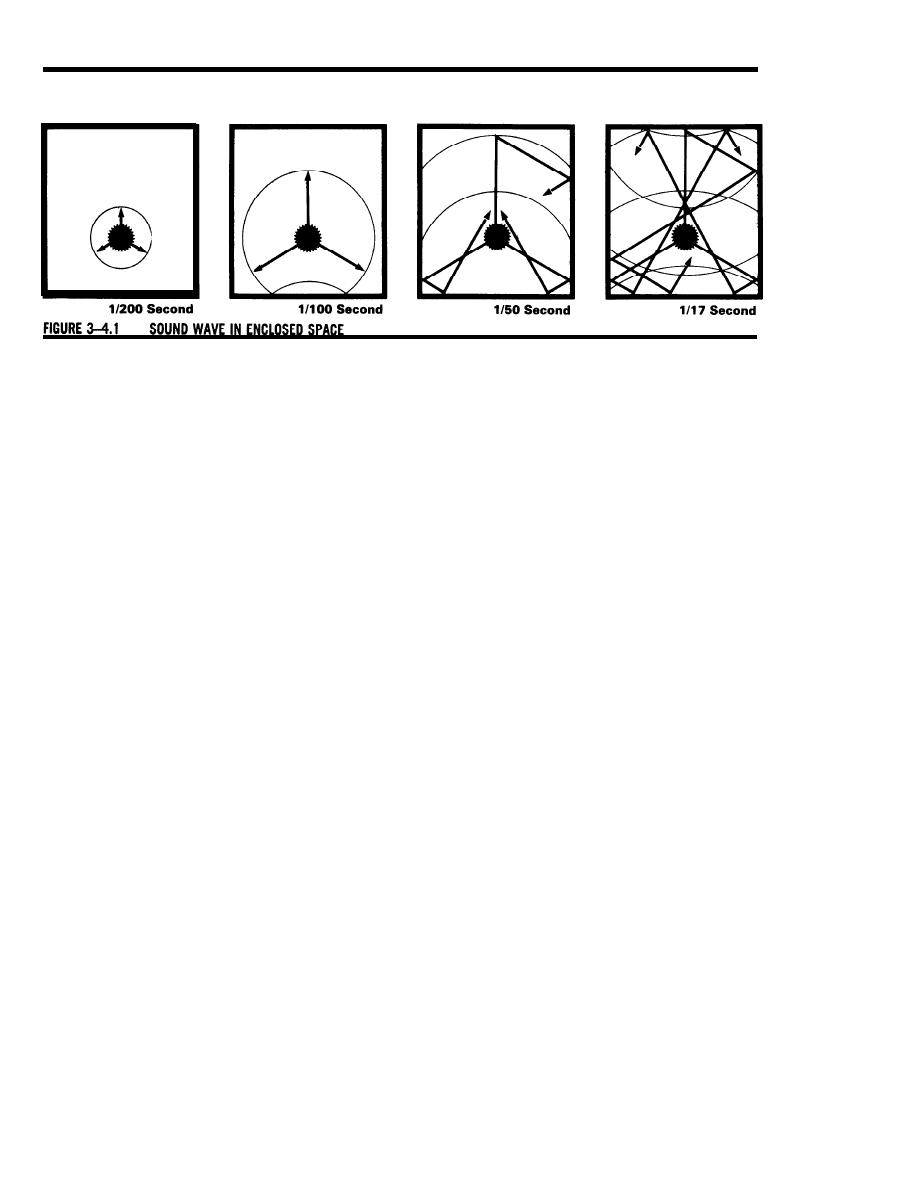
DESIGN GUIDE: MUSIC AND DRAMA CENTERS
DG 1110.3.120
CHAPTER 3: MUSIC ROOM QUALITIES
JANUARY 1981
3. Enhancement of Musical Qualities
and listeners are caught up in the continuing im-
provisation, making for a fuller appreciation of
Subjective opinion, comparison with familiar
subtle variations and combinations. Observation
models, education of the ear, and individual pref-
reveals certain qualities that enhance this
erence all enter into the judgment of what makes
one Music Room better than or different from
experience.
another.
1. Ability to Hear All Levels of Sound
This is sometimes generalized in terms of the
The acoustician, musician, and critic do not lay
dynamic range of music that can be heard in the
claim to a precise science, but to observable phe-
Room. It is evaluated in terms of loudness, or
nomena. Rooms that are judged good from these
the strength of sound perceived by the listener
viewpoints have been carefully examined for
and the evenness of this characteristic over a
consistent evidence. As a result, acousticians
range from the quietest (audience noise) to the
have gathered a better understanding of how
strongest fortissimo that does not produce
subjective impressions are formed and the con-
discomfort.
ditions that produce them.
a. The relationship of direct (source) sound to
Loudness in music listening is a complex sub-
reverberant (reflected) sound influences
jective measure. We hear the sound issuing di-
many of the subjective impressions of qual-
rectly from the performer and its reverberations
ity. Loudness of direct sound falls off with
in the Room as "one sound" unless something
distance and is affected by the design of the
is very wrong acoustically.
stage and its surrounding surfaces.
2. Appropriate Reverberation
A portion of this sound strikes reflective
An important measure of Music Room fitness is
surfaces and reverberates, losing energy as
decay of reverberation over time, or the persis-
it travels and bounces. Loudness of rever-
tence of audible sound after its source has
berant sound therefore falls off in propor-
stopped. Normally, two to three seconds elapse.
tion to the amount of absorptive materials
(including people) in the Room and to the
Like loudness, reverberation time is not a simple
fraction of direct energy that does not go
measure. One Room's reverberant characteris-
straight to the listener. In a small Room, the
tics will differ from another's and the pattern will
direct/reverberant ratio is high and rever-
also differ with musical pitch. Thus as the live-
beration time short. Music sounds dry,
ness also contributes to dynamic range, dynamic
sharp and even clinical.
range can be one guide to how well a given piece
Increasing the volume will lengthen rever-
of music or collection of instruments will be
beration. Altering the "sending end" can
heard. In terms of loudness, reverberant char-
increase the portion of sound directed into
acteristics are clues to tonal qualities and the
this volume versus that sent the listener. So
styles of music that will sound "right". Compos-
doing results in a "fuller" tone.
ers write music with the reverberant environ-
b. Tonal quality is a judgment of what the
ment in mind, be it a cathedral, recital hall or
Room adds to or subtracts from the sound.
parade ground.
"Brilliance" refers to enrichment of high
3-16


 Previous Page
Previous Page
